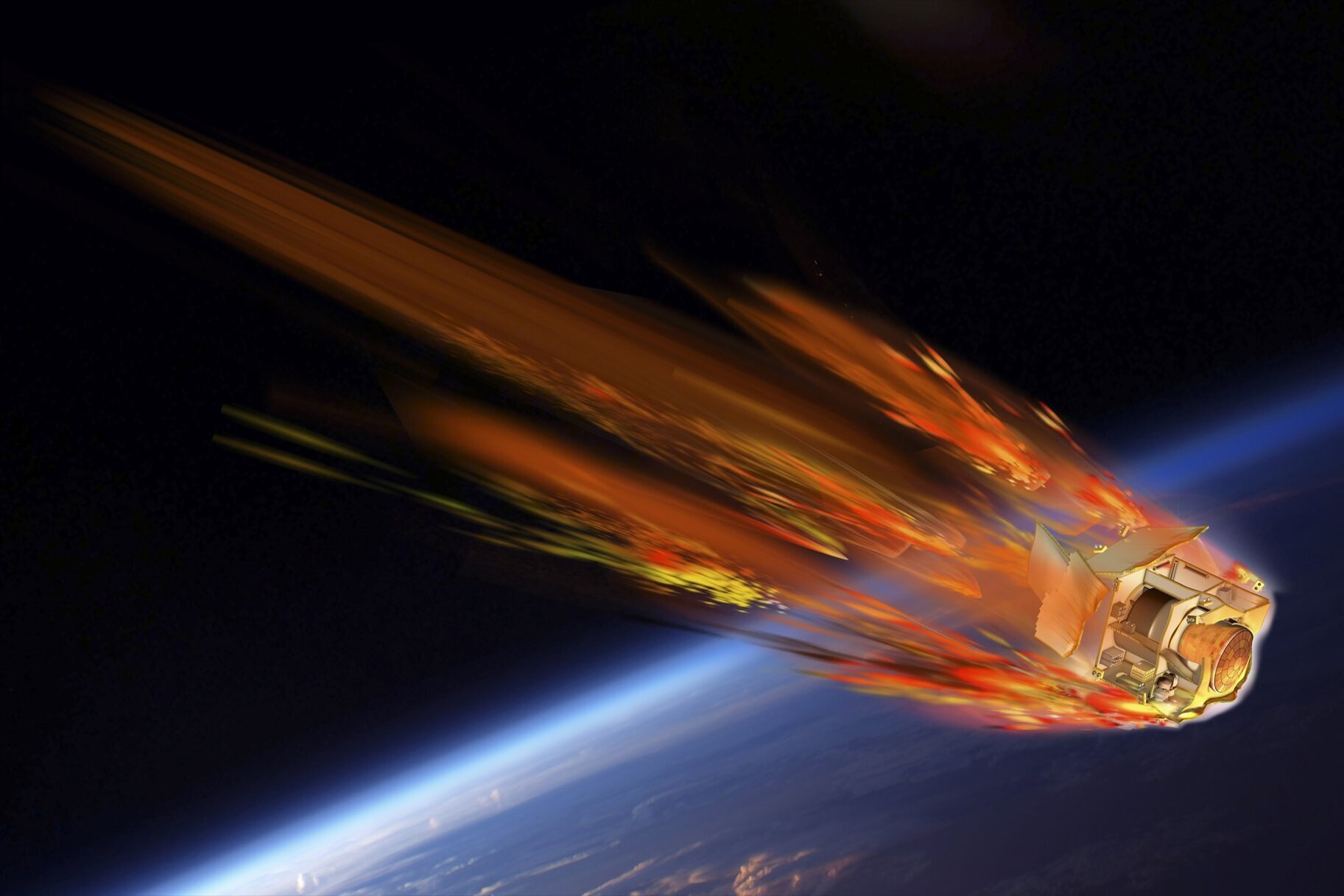A Satellite Born to Die Is About to Be Launched on a Suicide Mission
The ESA's Draco Mission has one objective, to burn up in reentry.

When Mary Shelley created Frankenstein in the early 19th century, the fields of biology and electricity offered endless mysteries, not to mention inspiration for one of the world’s most celebrated fictions. In the novel, the titular Dr. Frankenstein builds himself a creature constructed from the purloined pieces of the recently dead, and animates that creature with a “spark of being,” often imagined as a bolt of lightning.
The monster is borne out of Frankenstein’s desire to understand, and maybe even to conquer, the boundary between life and death. Unfortunately, the creature was doomed by the nature of its creation to live a brief life and die a fiery death. See for yourself, in Universal’s classic 1931 film adaptation, Frankenstein (now streaming on Peacock).
Two centuries later, scientists are trying to understand the admittedly less existential mysteries inherent in the deaths of spacecraft. Humanity has been blasting ourselves and our machines off the surface of the planet for the better part of a century and in that time, approximately 10,000 satellites and rocket bodies have reentered the atmosphere, according to the European Space Agency (ESA). Not to mention the tens of thousands of bits of space debris swirling in orbit around the world, still waiting to come down. But what happens when they do come down?
The ESA's Draco Mission, an Experiment to Study Satellite Death
Space travel and its consequences have become an everyday part of life on Earth, but we don’t have a very thorough understanding of what happens to a satellite in its last moments, or how the byproducts of its destruction impact the environment. The ESA has announced the Destructive Reentry Assessment Container Object (Draco) mission to answer those questions. The mission is part of the agency’s Zero Debris approach, which aims to reduce and eliminate the creation of space debris by 2030, in part by creating satellites which are “designed for demise.”
“Reentry science is an essential element of the design for demise efforts. We need to gain more insight into what happens when satellites burn up in the atmosphere as well as validate our re-entry models,” said Holger Krag, ESA Head of Space Safety, in a statement. “That’s why the unique data collected by Draco will help guide the development of new technologies to build more demisable satellites by 2030.”
The ESA has awarded a contract to Deimos, a technology group founded in 2001 and headquartered in Spain, for the development of the satellite. It will weigh about 200 kilograms (440 pounds), about the size of a washing machine, including four cameras and 200 sensors for measuring temperature, pressure, and strain at various points on the satellite. The goal is to launch a relatively average satellite and then watch closely as it is destroyed.
The plan is for Draco to launch and fly for no more than 12 hours – it will have no propulsion, navigation, or communication systems – before coming back down over the ocean. While the satellite should break and burn up like any other ordinary satellite, the instruments will be designed to survive the event and capture useful data. Once the satellite is gone, a parachute will deploy to buy the surviving data capsule some extra time. The data capsule (an object only about 15 inches across) will have to transmit data to a second geostationary satellite already in orbit, before it hits the water.
Like the fictional Frankenstein’s monster, Draco is doomed to a brief life and a fiery death, but its sacrifice will help scientists better understand what happens when a satellite reaches the end of its life.
Watch Universal’s 1931 classic monster movie Frankenstein, streaming now on Peacock!





























